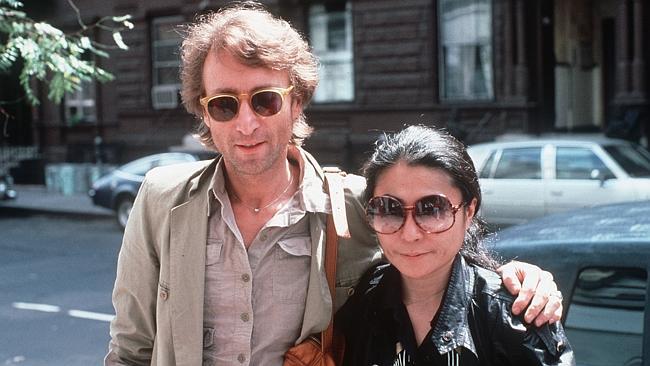Magical mystery Irish tour with a fragile Lennon
The slippage between a person and their image drives Beatlebone, a brilliant novel by Irish writer Kevin Barry.

I was 13 when John Lennon was shot. I vividly remember where I was and the sense of disbelief that he, of all people, could be dead. Beatlemania was long over, of course, yet Lennon was still one of the most famous people on the planet, his celebrity and the ubiquity of his music granting me, and millions, an intimacy with him that was simultaneously intense and imaginary.
It is precisely this slippage between the person and their image that drives Beatlebone, a brilliant — and brilliantly strange — novel by Irish writer Kevin Barry.
Beatlebone drops the reader into the mind of an imaginary version of Lennon two years before his fatal encounter with Mark Chapman outside the Dakota building in New York on December 8, 1980. This Lennon embarks on a quixotic mission to one of the islands in Clew Bay, on Ireland’s west coast, where he intends to find himself by losing himself or lose himself by finding himself (the two things being little different after all).
Although the episode itself is fictional, its genesis is not, for in 1967, in one of the odder footnotes to Beatle history, Lennon sent Apple employee Alistair Taylor to Ireland to purchase the island of Dorinish (“you’d say it Durn-ish”), something he did for “the knockdown price of £1550”. And although Lennon visited Dorinish only twice, he never forgot the place, and shortly before his death was considering plans to construct a holiday resort on the site.
The Lennon the novel imagines is not the magnetic, wisecracking Lennon of the early 1960s, or the oracular, long-haired Lennon who sought to subsume his personality in that of Yoko Ono in the late 60s and early 70s.
Instead this Lennon — or John, as the novel calls him — is a fragile man, by turns self-obsessed and self-destructive, but also exhausted by his celebrity and his turbulent psyche:
he has been haunted by his own self for such a long while, he has been endlessly fascinated by his own black self this long while — he is aching, he is godhead, he is a right bloody monster, but now he is thirty-seven … he wants at last to be over himself.
Of course things go awry right from the start. Although his plan had been to travel incognito, within hours of his arrival “half the newspapermen in Dublin are after piling onto the Westport train” in the hope of a glimpse of their famous visitor, a prospect that is too much for John, who throws himself on the mercy of his peculiarly ambiguous and distinctly diabolical driver and fixer, Cornelius O’Grady. (“I’ve been here before.” “We’ve all been here before, John.”) And so begins a magical mystery tour through rural Ireland.
There’s a wild, savage humour to these sections, which have the unsettling vividness of a fever dream.
In an “evil pub”, where the drinkers “appear to be related, or at least of a tribe”, John meets a man who has had his ear bitten off by a badger after he was kicked out of his mother’s house “on account of drink and the false accusation I had masturbated into the fireplace after she had gone to bed one night”. Later he is assaulted by a farmer who accuses him of stealing his cigarettes: “Who’s ever heard of a sheep farmer smoking f..king Gitanes!”
But none are as splendidly sinister as the extended interlude in the novel’s middle, in which Cornelius deposits John at a former hotel on an island, now run by the monstrous Joe, a man with “tiny yellowish pisshole-in-the-snow type eyes” and “the look of an enormous forest hog” and his two disciples, Frank and Sue.
This trio seem only too happy not just to initiate John into the “ranting” they are using to self-actualise but into a more intimate relationship.
There’s no question Beatlebone is a thoroughgoing delight sentence by sentence and chapter by chapter. The language is thrilling, electric, darkly comic, even more so than in Barry’s first novel, the IMPAC Award-winning City of Bohane, and many of the set pieces are incredibly impressive. Yet despite this its emotional satisfactions are more muted, at least at first, largely because John remains such a cipher. But then, as John and Cornelius finally reach the island, the narrative takes a sudden detour as Barry himself steps into the story to recount a series of digressions about his fascination with Lennon, his absorption in the research, and, not coincidentally, his encounters with ghosts and time slips.
The reader is of course entitled to wonder how much of this account is truth and how much fiction.
But in a way that question is beside the point. For by unsettling his narrative in this way, Barry reveals the fictiveness not just of his version of Lennon, but of historical fiction more generally, revealing the degree to which what is left of us “is mediated, and … can only be built up again in gimcrack reconstructions, with scenic facade”.
Perhaps improbably this section, and the ones that follow on the island and back in London, where John begins writing and recording again, are deeply moving.
This is not just because the cathartic effect on John is made more poignant by our knowledge of his real-world counterpart’s impending death but because the novel’s metafictional elements underline the contradictory duality of our imaginative relationship with the past, the fact “if we get the voices right, the fiction might hold for a while”.
James Bradley’s most recent novel is Clade.
Beatlebone
By Kevin Barry
Canongate, 272pp, $27.99



